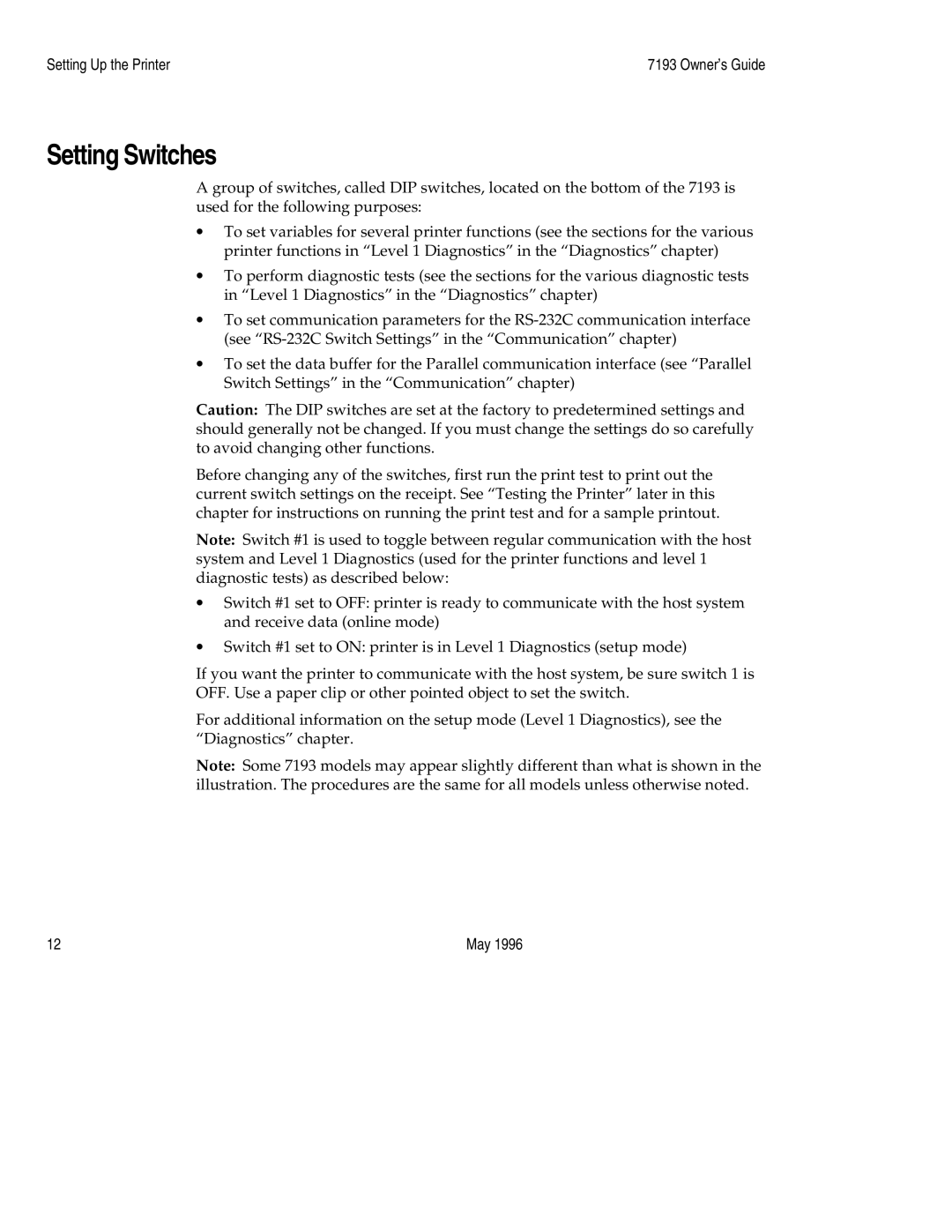Setting Up the Printer | 7193 Owner’s Guide |
Setting Switches
A group of switches, called DIP switches, located on the bottom of the 7193 is used for the following purposes:
∙To set variables for several printer functions (see the sections for the various printer functions in “Level 1 Diagnostics” in the “Diagnostics” chapter)
∙To perform diagnostic tests (see the sections for the various diagnostic tests in “Level 1 Diagnostics” in the “Diagnostics” chapter)
∙To set communication parameters for the
∙To set the data buffer for the Parallel communication interface (see “Parallel Switch Settings” in the “Communication” chapter)
Caution: The DIP switches are set at the factory to predetermined settings and should generally not be changed. If you must change the settings do so carefully to avoid changing other functions.
Before changing any of the switches, first run the print test to print out the current switch settings on the receipt. See “Testing the Printer” later in this chapter for instructions on running the print test and for a sample printout.
Note: Switch #1 is used to toggle between regular communication with the host system and Level 1 Diagnostics (used for the printer functions and level 1 diagnostic tests) as described below:
∙Switch #1 set to OFF: printer is ready to communicate with the host system and receive data (online mode)
∙Switch #1 set to ON: printer is in Level 1 Diagnostics (setup mode)
If you want the printer to communicate with the host system, be sure switch 1 is OFF. Use a paper clip or other pointed object to set the switch.
For additional information on the setup mode (Level 1 Diagnostics), see the “Diagnostics” chapter.
Note: Some 7193 models may appear slightly different than what is shown in the illustration. The procedures are the same for all models unless otherwise noted.
12 | May 1996 |
